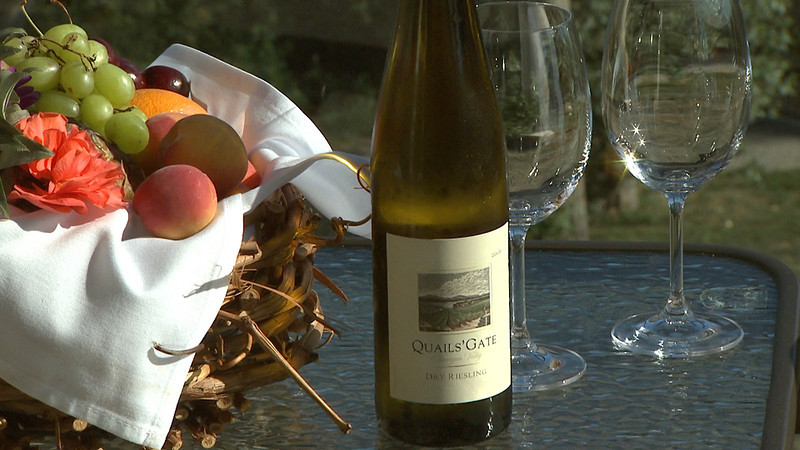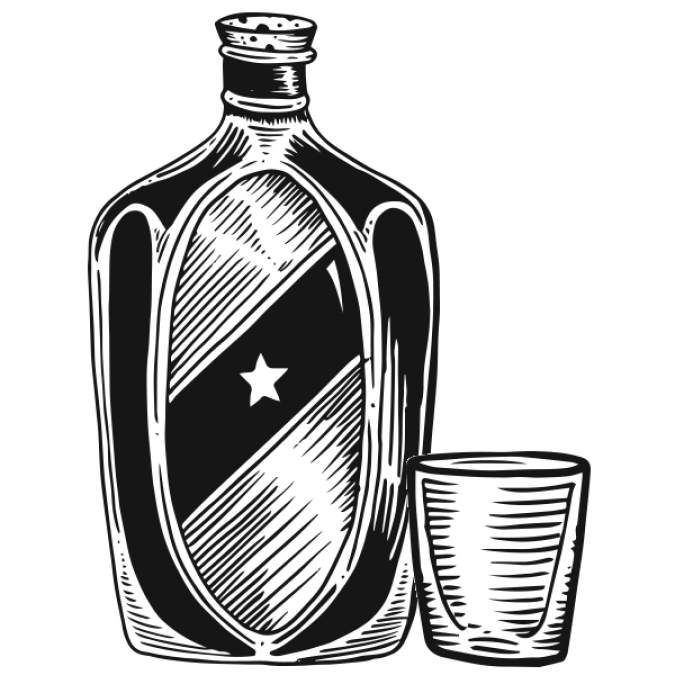What comes to mind when I mention Canada and drinking? Most likely beer, or possibly Canadian whiskey. Yet the Okanagan Valley in British Columbia is an emerging wine region, and as the quality improves and a few legal hurdles are cleared, you’ll start seeing more of those wines here in Seattle. At a recent dinner sponsored by Whole Foods, I had a chance to taste both the strengths and weaknesses of that region firsthand.
In many ways, the Okanagan Valley is ideally suited for wine production. As in eastern Washington, the summers are hot and dry and the northerly latitude ensures lots of sun during the day. Three lakes—Okanagan, Osoyoos, and Skaha—moderate temperature year round and provide much-needed water for irrigating vines. Add to all this the beauty: It’s one of the most scenic wine regions in North America.
Photo from BC Wine Institute
Yet still it’s not on the level of Napa, the Willamette, or even Walla Walla. The wine industry is relatively small and new, and while grapes have been planted in the region for decades, commercial production really took off only in the 1990s. More important, until very recently virtually all the wine made in B.C. was sold in B.C. or Alberta. That large, and captive, local market has served as a safety net for many producers, and made quality a bit less essential.
That’s not to say that great wines can’t be found. Because of the Okanagan’s proximity to water, it seems that its best wines are made from grapes typically grown in similar conditions: white varietals like riesling and sauvignon blanc and red varietals like cabernet franc and merlot. This was evidenced at the tasting, where the 2012 Tantalus showed all the right markers of a cool-climate riesling: bracing acidity, stark minerality, and the green-apple quality that’s the hallmark of the grape. Similarly, Burrowing Owl’s 2011 cabernet franc was beautifully aromatic and delicate, all violet flowers and cassis.
The other six wines we tasted were less noteworthy, or in one case almost aggressively undrinkable: imagine cherry cough syrup poured on a tire fire. While there’s no doubt that the Okanagan Valley can produce great wine, I’ve yet to be convinced they’re doing it nearly as consistently as Washington, Oregon, or California.
However, Okanagan excels does excel in ice wine. While dessert wines tend to be the ignored child of the wine family, when made well they can have a complexity and character that no dry wine can match. The conditions in B.C. are ideal for making ice wines; grapes freeze on the vine and stay frozen for days until pressed.
While the quality might still be uneven, it’s tremendously exciting to see some of these wines return to Seattle shelves after a decade of unfavorable exchange rates and lackluster demand that kept almost all B.C. wines in Canada. Of course,we’re practically drowning in a sea of Washington wine at the moment, but at the very least wines from the Okanagan Valley are a vast improvement over Molson Ice.
thebarcode@seattleweekly.com







